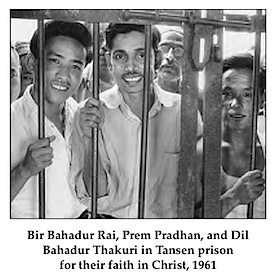Why Nepal?

Prayer can penetrate anywhere. Long before we enter the valleys of Nepal prayer can be doing a concrete work in laying the foundations for the future kingdom. . . . When we have prepared the way with the Spirit of God in prayer, he will answer those very prayers in permitting us to occupy Nepal.
Gordon Guinness, The Quest of the Nepal Border, 1928
We can never predict where and how the next breakthrough in world missions will occur. But when it comes there are always transferable principles on display.
Here's what John Barclay has learned after spending much of his life in Nepal and witnessing a move of God in this former Hindu kingdom.
First, there was an unprecedented degree of cooperation among various Christian groups.
Second, rapid development in Nepal, encouraged by His Majesty’s Government of Nepal, resulted in openness among the common people to new things.
Third, the prohibition of conversion and the reality of persecution from the outset prevented nominalism and kept the church strong.
Fourth, most converts were young, vigorous, and vibrant, with a keen sense of evangelistic outreach to the majority society. Also, family conversions were not uncommon, and mass conversions occasionally took place among tribal groups.
Fifth, retired Gurkha servicemen who had converted to Christianity while in the Indian or British army returned to their villages and established small Christian communities.
Sixth, new Christians were trained across the border in India to fill the need for pastors and church leaders. Locally, there were short-term training schools and conferences.
Seventh, several parachurch groups, especially student and youth organizations, worked alongside the churches to spur evangelism and to support new Christians.
Eighth, Christian literature, including translation of portions of Scripture into several tribal languages and the translation of the whole Bible in Nepali, spread the Christian message. Radio ministries transmitted the message. Bible correspondence courses provided instruction to thousands of new believers.
Ninth, the predominant use of indigenous songs and tunes reflected the general pattern of indigenous worship that included such culturally appropriate practices as meeting on Saturdays (Sunday being a working day in Nepal) and gender-segregated seating on the floor, often in ordinary village homes.
Finally, Betty Young, added the following: “A very widespread means which God has used in the rapid spread of the Gospel is healing—there must be thousands who have come to the Lord through healing.”
John Barclay: A Description and Analysis of the Growth of the Church in Nepal
